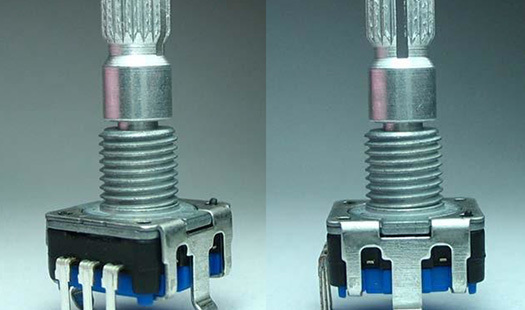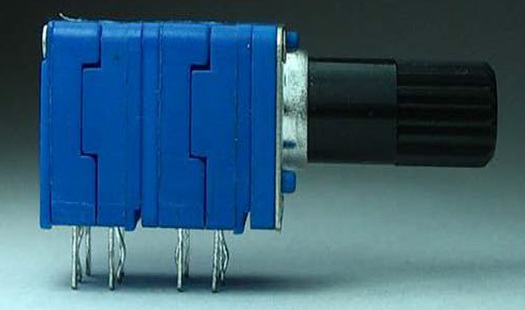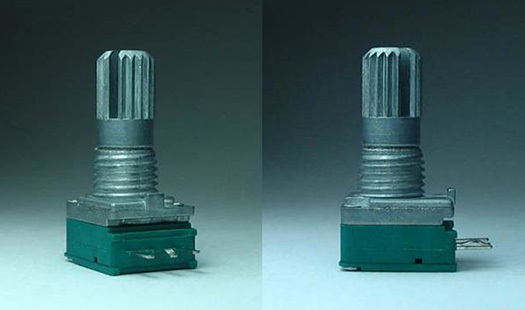The Basics of Potentiometer Audio: What You Need to Know for Optimal Sound Performance
Jul 29,2025
The Basics of Potentiometer Audio: What You Need to Know for Optimal Sound Performance
Table of Contents
1. Introduction to Potentiometers in Audio
2. What Is a Potentiometer?
3. Types of Potentiometers Used in Audio
4. Working Principle of Potentiometers
5. Applications of Potentiometers in Audio Devices
6. Importance of Quality Potentiometers in Audio
7. Troubleshooting Common Aud
The Basics of Potentiometer Audio: What You Need to Know for Optimal Sound Performance
Table of Contents
- 1. Introduction to Potentiometers in Audio
- 2. What Is a Potentiometer?
- 3. Types of Potentiometers Used in Audio
- 4. Working Principle of Potentiometers
- 5. Applications of Potentiometers in Audio Devices
- 6. Importance of Quality Potentiometers in Audio
- 7. Troubleshooting Common Audio Issues Related to Potentiometers
- 8. The Future of Potentiometers in Audio Technology
- 9. Frequently Asked Questions
- 10. Conclusion
1. Introduction to Potentiometers in Audio
In the realm of audio technology, the **potentiometer** plays a crucial role, often overlooked by casual listeners but vital for those deeply invested in sound quality. From adjusting volume levels to fine-tuning tone controls, potentiometers are essential components in a multitude of audio devices. This article aims to provide a comprehensive understanding of potentiometers in audio applications, their functionality, types, and how to choose the right one for your needs.
2. What Is a Potentiometer?
A potentiometer is an electronic component that functions as a variable resistor, allowing users to adjust the resistance manually and thereby control the voltage in a circuit. In audio devices, potentiometers are commonly used for managing different parameters such as volume, balance, and tone. Most potentiometers consist of three terminals: two are connected to an input voltage, and the third is connected to the adjustable output. By rotating or sliding the component, users can vary the output voltage, thus influencing the audio signal.
2.1 Potentiometer vs. Other Resistors
Unlike fixed resistors, which have a set resistance value, potentiometers offer users the flexibility to change resistance dynamically. This characteristic is what makes them indispensable in audio control applications. There are also other adjustable components like rheostats, but potentiometers are preferred in audio systems due to their three-terminal configuration.
3. Types of Potentiometers Used in Audio
Understanding the various types of potentiometers available is essential for making informed decisions in audio applications. The most common types include:
3.1 Linear Potentiometers
Linear potentiometers provide a consistent and smooth change in resistance when the knob or slider is adjusted. They are often used in volume controls and tone adjustments where a linear response is desired.
3.2 Logarithmic Potentiometers
Logarithmic potentiometers, also known as audio taper pots, are designed specifically for audio applications. The change in resistance is logarithmic rather than linear, which aligns better with human perception of sound. This makes them ideal for volume controls, as they allow for a more intuitive adjustment of sound levels.
3.3 Digital Potentiometers
Digital potentiometers replace traditional analog potentiometers with digital control. These devices can be adjusted using microcontrollers or other digital systems, allowing for precise control and integration into modern audio devices.
4. Working Principle of Potentiometers
The working principle of a potentiometer is grounded in basic electrical theory. As a variable resistor, it operates based on Ohm’s Law, where voltage is equal to the current multiplied by resistance (V = IR). When the potentiometer is adjusted, the resistance changes, leading to a corresponding change in the voltage output.
4.1 The Role of the Wiper
At the heart of every potentiometer is the **wiper**, which is the movable contact that slides across a resistive element. When the wiper is moved, it alters the resistance between itself and the two end terminals, thereby changing the output voltage. This mechanism is what allows for the adjustable functionality in audio applications.
5. Applications of Potentiometers in Audio Devices
Potentiometers find applications in a variety of audio devices, enhancing control and customization of sound. Key applications include:
5.1 Volume Controls
Volume control is perhaps the most common use of potentiometers. Users can easily adjust sound levels to their preference, whether in home audio systems, musical instruments, or professional audio equipment.
5.2 Tone Controls
Potentiometers are also used in tone control circuits, allowing users to adjust bass, midrange, and treble frequencies. This ability to tailor sound characteristics is vital for achieving the desired audio quality.
5.3 Balance Adjustments
In stereo systems, potentiometers enable users to adjust the balance between left and right channels. This feature is crucial for creating an immersive listening experience and compensating for speaker placement or listener position.
6. Importance of Quality Potentiometers in Audio
The quality of potentiometers directly influences audio performance. High-quality potentiometers can significantly reduce noise and enhance the overall clarity of sound. Here’s why investing in better potentiometers is vital:
6.1 Signal Integrity
Quality potentiometers maintain signal integrity, ensuring that audio signals remain clear and uncolored. Cheaper alternatives may introduce noise or distortions, degrading sound quality.
6.2 Durability
Superior materials and craftsmanship result in potentiometers that are more durable and reliable, ensuring a longer lifespan and consistent performance over time.
6.3 User Experience
Quality potentiometers often provide smoother operation with better tactile feedback. This aspect enhances user experience, making adjustments feel more precise and satisfying.
7. Troubleshooting Common Audio Issues Related to Potentiometers
Despite their reliability, potentiometers can encounter issues that affect audio performance. Here are some common problems and their solutions:
7.1 Crackling Sounds
If you hear crackling or popping noises when adjusting a potentiometer, it may indicate dirt or oxidation on the contacts. Cleaning the potentiometer with electronic contact cleaner can often resolve this issue.
7.2 Volume Drop
A sudden drop in volume may suggest a faulty potentiometer. In such cases, replacing the component is usually the best solution.
7.3 Unresponsive Controls
When a potentiometer becomes unresponsive, it might be due to a broken wiper or connection. Inspecting the component and replacing it if necessary will restore functionality.
8. The Future of Potentiometers in Audio Technology
As technology continues to evolve, so do the applications and designs of potentiometers in audio. The integration of digital technologies and smart devices has led to the development of advanced digital potentiometers, which offer enhanced control and versatility in modern audio systems.
8.1 Smart Audio Devices
The rise of smart home systems is paving the way for potentiometers that can be controlled via apps or voice commands. This innovation promises unprecedented convenience and accessibility in audio management.
8.2 Enhanced User Interfaces
Future potentiometers may incorporate touch-sensitive controls or haptic feedback mechanisms, providing users with a more interactive and engaging experience.
9. Frequently Asked Questions
9.1 What is the difference between linear and logarithmic potentiometers?
Linear potentiometers provide a direct relationship between the position and resistance, while logarithmic potentiometers adjust resistance on a logarithmic scale, making them more suitable for audio applications.
9.2 How do I choose the right potentiometer for my audio project?
Consider factors such as resistance value, taper (linear or logarithmic), physical size, and mounting type to ensure the potentiometer meets your specific needs.
9.3 Can I clean my potentiometer to improve its performance?
Yes, using an electronic contact cleaner can help remove dirt and oxidation, improving the performance of your potentiometer.
9.4 What are the signs of a failing potentiometer?
Common signs include crackling sounds during adjustment, sudden volume changes, or unresponsive controls.
9.5 Are digital potentiometers better than analog ones?
Digital potentiometers offer precision and integration with digital systems, making them advantageous for some applications, but analog potentiometers still have their place in traditional audio setups.
10. Conclusion
Understanding the basics of potentiometers in audio can significantly enhance your audio experience, whether you are a casual listener or a serious audiophile. By knowing what potentiometers are, their types, and their applications, you can make informed decisions that lead to optimal sound performance. High-quality potentiometers improve audio clarity, ensure durability, and provide a better user experience. As technology continues to advance, potentiometers will remain a pivotal element in the evolution of audio technology, making it essential for enthusiasts and professionals alike to stay informed.
PREVIOUS:
More Information
2025-07-04
More Information
2025-07-04
RECOMMENDED










